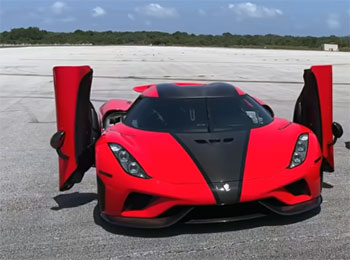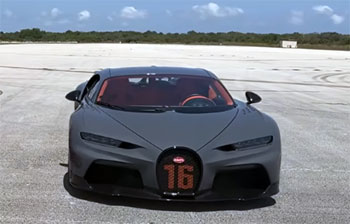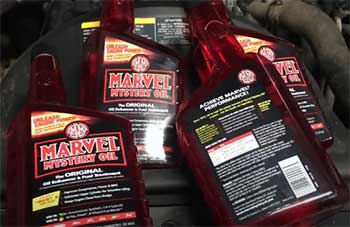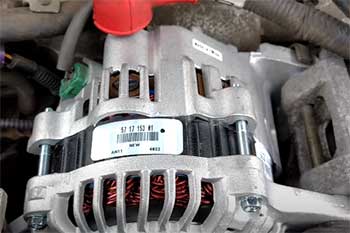I’ve always been fascinated by hypercars, those engineering marvels that push the boundaries of speed, design, and innovation. As a car enthusiast, I find myself torn between two titans of the automotive world: Bugatti and Koenigsegg. These brands represent the pinnacle of performance, each with its own philosophy and flair.
In this article, I’ll compare Bugatti and Koenigsegg from a driver’s perspective, exploring their strengths, weaknesses, and unique features. By the end, you’ll have a clear sense of what makes each brand special and which might steal your heart.
Comparison Table: Bugatti vs. Koenigsegg
| Feature | Bugatti Chiron Super Sport 300+ | Koenigsegg Jesko Absolut |
|---|---|---|
| Engine | 8.0L Quad-Turbo W16 | 5.0L Twin-Turbo V8 |
| Horsepower | 1,600 hp | 1,600 hp (E85 fuel) |
| Top Speed | 304.77 mph (proven) | 330 mph (theoretical) |
| 0-60 mph | 2.4 seconds | 2.5 seconds |
| Weight | 4,398 lbs | 3,130 lbs |
| Drivetrain | All-Wheel Drive | Rear-Wheel Drive |
| Transmission | 7-Speed Dual-Clutch | 9-Speed Lightspeed |
| Price | ~$3.9 million | ~$3.0 million |
| Production Run | Limited (30 units) | Limited (125 units) |
| Interior Focus | Luxury and Comfort | Performance and Minimalism |
| Aerodynamics (Cd) | 0.33 | 0.278 |
My Journey into Hypercars
I remember the first time I saw a Bugatti Veyron scream past me at a car show. The sheer presence of it—low, wide, and radiating power—left me speechless. Years later, I watched a Koenigsegg Agera RS set a world record on YouTube, and I was hooked on its raw, unfiltered aggression.
Both brands have a knack for making your heart race, but they approach hypercar design differently. Bugatti feels like a luxurious sledgehammer, blending opulence with brute force, while Koenigsegg is a surgical scalpel, prioritizing innovation and lightweight performance. Let’s break down what makes each brand tick.
Bugatti: The King of Grand Touring

When I imagine driving a Bugatti Chiron Super Sport 300+, I picture myself gliding effortlessly down a French autoroute, surrounded by leather and carbon fiber, with the W16 engine purring behind me.
Bugatti’s heritage, rooted in Molsheim, France, is all about combining luxury with mind-bending speed.
The Chiron Super Sport 300+ is the fastest production car to date, hitting 304.77 mph in 2019, a feat verified by Germany’s TÜV.
That’s not just a number—it’s a testament to Bugatti’s engineering prowess.
Key Features of Bugatti
The Chiron’s 8.0-liter quad-turbo W16 engine is a mechanical masterpiece, delivering 1,600 horsepower with a linear power curve that feels relentless. The all-wheel-drive system ensures that power is planted firmly, making it surprisingly easy to drive, even at high speeds.
The seven-speed dual-clutch transmission shifts seamlessly, and the car’s extended body reduces drag to a coefficient of 0.33, optimized for stability at 300 mph. Inside, the cabin is a blend of luxury and technology, with premium materials and a minimalist dashboard that prioritizes driver focus. Bugatti also offers bespoke customization, letting you tailor every detail to your taste.
Pros of Bugatti
- Unmatched Top Speed: The Chiron Super Sport 300+ holds the crown for the fastest production car, with a proven 304.77 mph run.
- Luxurious Comfort: The interior feels like a private jet, with plush leather, polished metal, and a focus on grand touring.
- Stable Handling: All-wheel drive and torque vectoring make it forgiving, even when pushing the limits.
- Brand Prestige: Bugatti’s legacy, backed by Volkswagen’s resources, carries a certain cachet that’s hard to beat.
- Customization: Bugatti’s bespoke program lets you create a one-of-a-kind hypercar.
Cons of Bugatti
- Weight: At 4,398 lbs, the Chiron is heavy, which can dull its agility in tight corners.
- Price: Starting at around $3.9 million, it’s a significant investment, even for a hypercar.
- Limited Agility: Compared to lighter rivals, it prioritizes straight-line speed over nimble handling.
- Fuel Economy: With 10.45 mpg, it’s a gas guzzler, though who buys a Bugatti for efficiency?
- Exclusivity: Only 30 units of the Super Sport 300+ were made, making it nearly impossible to acquire.
Koenigsegg: The Innovator’s Dream

Now, picture me behind the wheel of a Koenigsegg Jesko Absolut, tearing down a Swedish runway, the twin-turbo V8 screaming at 7,800 rpm.
Koenigsegg, founded by Christian von Koenigsegg in 1994, is the underdog that punches above its weight.
Based in Ängelholm, Sweden, the company builds hypercars that are as much about engineering breakthroughs as they are about speed.
The Jesko Absolut, designed to chase 330 mph, embodies Koenigsegg’s relentless pursuit of innovation.
Read More: My Thoughts On Acura MDX Vs. Lexus GX
Key Features of Koenigsegg
The Jesko Absolut’s 5.0-liter twin-turbo V8 produces 1,600 horsepower on E85 fuel, matching the Chiron’s output but in a lighter 3,130-lb package. Its nine-speed Lightspeed transmission is a marvel, shifting gears in milliseconds. The car’s aerodynamics are exceptional, with a drag coefficient of 0.278, making it one of the slipperiest hypercars ever.
Koenigsegg’s signature dihedral synchro-helix doors add flair, while the minimalist interior focuses on performance with carbon fiber and Alcantara. The Jesko also features advanced tech like a camless engine in the Gemera and 3D-printed components.
Pros of Koenigsegg
- Lightweight Design: At 3,130 lbs, the Jesko is over 1,200 lbs lighter than the Chiron, enhancing agility.
- Innovative Engineering: Koenigsegg’s in-house tech, like the Lightspeed transmission and camless engine, pushes boundaries.
- Theoretical Top Speed: The Jesko Absolut aims for 330 mph, potentially outpacing Bugatti.
- Exclusivity: With only 125 units, it’s rare but more accessible than the Chiron Super Sport 300+.
- Price: Starting at $3.0 million, it’s relatively more affordable than Bugatti.
Cons of Koenigsegg
- Unproven Top Speed: The Jesko’s 330 mph claim is theoretical, awaiting real-world validation.
- Fuel Dependency: Peak power requires E85 fuel, which isn’t widely available.
- Comfort: The interior prioritizes performance over luxury, lacking Bugatti’s opulence.
- Brand Recognition: Koenigsegg lacks Bugatti’s century-long prestige.
- Rear-Wheel Drive: While agile, it can be trickier to handle at the limit compared to AWD.
Performance Face-Off

Let’s talk numbers. The Chiron Super Sport 300+ accelerates from 0-60 mph in 2.4 seconds, just edging out the Jesko Absolut’s 2.5 seconds. In drag races, the Chiron’s all-wheel drive gives it a launch advantage, as seen in CarWow’s tests where it consistently beat the Jesko off the line.
However, the Jesko’s lighter weight and lower drag coefficient make it a contender at higher speeds, winning a rolling race from 62 mph. The Chiron’s proven 304.77 mph top speed is a benchmark, but Koenigsegg’s Agera RS previously set a 277.9 mph record, and the Jesko Absolut’s design suggests it could go further.
Handling is where things get interesting. The Chiron’s all-wheel drive and torque vectoring make it stable and forgiving, ideal for high-speed straights and grand touring. I imagine cruising effortlessly, the car absorbing imperfections with its refined suspension. The Jesko, however, is a driver’s car.
Its rear-wheel-drive setup and lighter chassis make it feel nimble, almost like a race car. I’d feel every input, every corner, but it demands more skill, especially on a twisty track. Koenigsegg’s focus on aerodynamics and downforce means the Jesko Attack variant could outshine the Chiron on a circuit, though the Absolut prioritizes top speed.
Design and Aesthetics
Bugatti’s design is bold and muscular, with the Chiron’s iconic horseshoe grille and sleek, elongated body. It’s a car that commands attention, like a luxury yacht on wheels. I love the way the Chiron’s lines flow, especially in the Super Sport 300+ with its extended tail and 3D-printed titanium exhaust. Koenigsegg, on the other hand, takes a minimalist approach. The Jesko Absolut’s smooth, aerodynamic shape is almost futuristic, with clean lines and a low profile. Its dihedral doors are a showstopper, swinging upward in a way that feels like a sci-fi movie. Both cars are stunning, but Bugatti leans toward grandeur, while Koenigsegg embraces understated aggression.
Interior Experience
Stepping into a Chiron feels like entering a high-end lounge. The leather-wrapped seats, polished aluminum accents, and intuitive controls scream luxury. It’s a car you could drive cross-country without fatigue. The Jesko’s interior, by contrast, is spartan but purposeful. Carbon fiber dominates, with lightweight seats designed for performance driving. The infotainment is advanced, but it’s clear Koenigsegg prioritizes function over comfort. If I’m planning a long drive, the Chiron’s cabin wins; for a track day, the Jesko’s focus keeps me engaged.
Engineering and Innovation
Bugatti’s engineering is backed by Volkswagen’s vast resources, allowing for meticulous refinement. The W16 engine is a proven workhorse, and the Chiron’s build quality is impeccable. Koenigsegg, however, is the innovator’s darling. Operating out of a converted airfield in Sweden, they’ve developed everything in-house, from the Lightspeed transmission to a camless engine for the Gemera. The Jesko’s use of 3D-printed parts and lightweight materials is groundbreaking. I’m in awe of Koenigsegg’s ability to achieve so much with fewer resources, but Bugatti’s polish is undeniable.
Ownership Experience
Owning a hypercar is a commitment. Bugatti’s bespoke program lets you customize every detail, from paint to stitching, but the $3.9 million price tag and limited production (30 units for the Super Sport 300+) make it a rare privilege. Maintenance costs are astronomical, with tire changes alone costing tens of thousands. Koenigsegg’s $3.0 million Jesko is slightly more accessible, with 125 units planned. Its maintenance is also costly, but the brand’s smaller scale means a more personal relationship with the factory. Both brands offer exclusivity, but Koenigsegg feels like a passion project, while Bugatti is a status symbol.
Driving Impressions
If I could drive both, the Chiron would feel like a private jet—smooth, powerful, and effortless. It’s a car that makes 200 mph feel like a Sunday drive. The Jesko, however, would keep me on edge, its lighter weight and rear-wheel-drive setup demanding focus. I’d feel every shift of the Lightspeed transmission, every tweak of the steering. For sheer adrenaline, the Jesko wins; for cruising in style, the Chiron is unmatched. Your choice depends on whether you crave raw engagement or refined power.
Market Position and Legacy
Bugatti’s legacy stretches back to 1909, with a racing heritage that includes icons like the Type 35. Its acquisition by Volkswagen in 1998 gave it the resources to dominate the hypercar scene. Koenigsegg, founded in 1994, is the scrappy newcomer, but its records—like the Agera RS’s 277.9 mph run in 2017—prove it’s a serious contender. Bugatti’s parent company gives it an edge in refinement, but Koenigsegg’s innovation steals the spotlight. Both brands cater to the ultra-wealthy, but Koenigsegg feels like the choice for enthusiasts who value engineering over prestige.
The Verdict
Choosing between Bugatti and Koenigsegg is like picking between a perfectly aged whiskey and a cutting-edge craft cocktail. Bugatti offers unmatched luxury and proven performance, while Koenigsegg delivers raw excitement and groundbreaking tech. If you want a car that feels like a rolling palace with a verified top speed, the Chiron Super Sport 300+ is your pick. If you’re after a lightweight, innovative hypercar with the potential to redefine records, the Jesko Absolut is calling your name. For me, the Koenigsegg’s passion and ingenuity edge out slightly, but you can’t go wrong with either.
Read More: My Thoughts On Acura MDX Vs. Volvo XC90
Frequently Asked Questions (FAQ)
It depends on your priorities. Bugatti excels in luxury and proven top speed, while Koenigsegg offers lightweight agility and innovative engineering.
Currently, the Bugatti Chiron Super Sport 300+ holds the top speed record at 304.77 mph. Koenigsegg’s Jesko Absolut aims for 330 mph but hasn’t been tested yet.
Absolutely. Both brands compete for the title of fastest production car and push hypercar engineering to new heights.
No production car has officially surpassed the Chiron Super Sport 300+’s 304.77 mph, though Koenigsegg’s Jesko Absolut claims a theoretical 330 mph.
Conclusion
As I wrap up this exploration of Bugatti and Koenigsegg, I’m left marveling at how these brands redefine what’s possible. Bugatti’s Chiron Super Sport 300+ offers you a luxurious, record-breaking experience, while Koenigsegg’s Jesko Absolut tempts with its lightweight, innovative spirit. Whether you lean toward Bugatti’s grandeur or Koenigsegg’s raw passion, both deliver a driving experience that’s nothing short of extraordinary. You’re choosing between two visions of automotive perfection—pick the one that sets your soul on fire.

